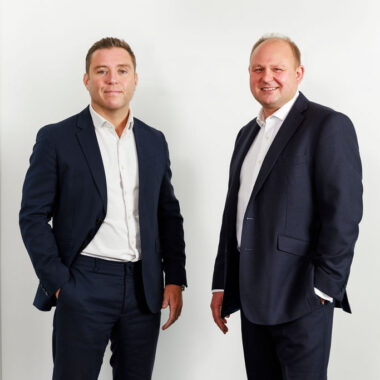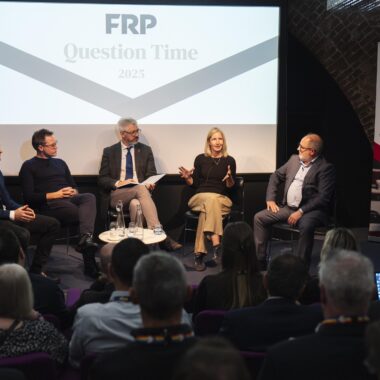We recently brought together a panel of leading experts from the Interim Management and Private Equity (PE) sectors for a thought-provoking discussion on fostering more effective collaboration between these two dynamic fields. The conversation delved into the key elements that drive successful partnerships, exploring the challenges that can hinder progress, and examining why some Interim assignments deliver outstanding results whilst others can fall short.
How Interim Managers and Private Equity experts can work together effectively
Chaired by Interim Executive Peter Charles and moderated by FRP Transition Director Susan Moor, the event featured valuable insights from industry leaders, including Interim Ian Pidgen-Bennett, CMS Partner Stuart Tait, and Sandton Capital Chief Executive Toby Bundy.
Panellists stressed that before engaging with a PE fund, Interims should prioritise crafting a clear and concise CV, explaining that PE funds typically filter and funnel CVs to build a shortlist, meaning a well-prepared document is crucial for getting noticed.
Once shortlisted and under an NDA, Interims should seek to understand four key areas:
- The core issue the portfolio company is facing
- How their skills align with the challenge
- The expected timeframe for the assignment
- What success looks like in the eyes of the PE fund
When there is an established working history between an Interim and a PE fund, the recruitment process becomes more relaxed. However, the panel emphasised that beyond technical competency, the key determinant of success is the working chemistry between the Interim and the PE team. Many candidates can execute the task, but effective collaboration hinges on whether both parties can work cohesively and complement each other.

Navigating complex relationships with PE funds
Addressing the challenge of hands-on PE involvement, panellists noted that the best Interims act as the central hub of a stakeholder web. This means building strong relationships across all areas while maintaining alignment with the company’s strategic goals.
Handling contentious assignments
Leadership was acknowledged as being critical in contentious situations. Interims must act decisively, which could include stepping into roles akin to a shadow director. To mitigate risks, Interims should and ensure information gathered, including at board meetings are well-documented.
Introducing an Interim: Best practice
Securing buy-in from the existing management team and key employees is vital. The panel agreed that the introduction process should clearly explain the situational expertise the Interim brings to the table, a skillset often distinct from sector-specific knowledge.
Interim assignments typically fall into three categories:
- Direct replacements: Filling a vacant senior leadership role
- Project-based roles: Delivering on specific initiatives
- Crisis management: Addressing urgent operational or financial challenges
Framing the Interim’s role as a solution to a situational problem helps foster understanding and cooperation from internal teams; acting as an agent of change with transparency and clarity can accelerate acceptance and support.
Reporting to PE funds: Frequency and approach
The panel emphasised that reporting frequency depends on the specific situation and the nature of the PE fund, highlighting that the more complex the situation, the more frequent the updates should be. Smaller funds also tend to be more hands-on and expect regular communication.
Whilst Interims may assume they have autonomy, PE funds generally want to be consulted on major decisions, particularly changes to the management team. Clear, consistent communication ensures alignment and reduces the chance of misunderstandings.
Coordinating stakeholders
Panellists discussed the importance of challenging assumptions when necessary and keeping the PE fund informed as problems arise. PE firms often deploy Interims with an initial hypothesis about the issue at hand. However, it is the Interim’s role to troubleshoot and provide a nuanced understanding of the situation. When multiple PE funds are involved, a designated stakeholder typically holds the decision-making, a role that becomes particularly critical in the context of shareholder disputes.
Managing legacy Interim appointments
When stepping into a role previously held by another Interim, maintaining stability is paramount. The key steps for a smooth transition outlined by the panel were:
- Ensuring a thorough handover process lasting one to two months
- Establishing a stable operational platform
- Considering retaining the Interim as an adviser to preserve institutional knowledge
Delivering difficult news
PE funds value timely and transparent communication, particularly when it comes to delivering negative news. The panel stated that bad news should be shared as soon as possible, allowing for early mitigation.
Interims who combine problem identification with potential solutions are seen as proactive and trustworthy. This collaborative approach fosters stronger relationships and helps PE funds navigate challenges with confidence.
Bridging the disconnect between PE and Interims
Whilst there can be a disconnect between PE funds and Interims, the panel agreed that appointing based on situational expertise minimises this risk. PE firms may believe they understand the issue at hand, but true clarity often emerges only after an Interim is embedded in the organisation.
Ultimately, successful collaboration relies on mutual understanding, clear communication, and a shared commitment to achieving the desired outcomes. By fostering alignment and maintaining open dialogue, both Interims and PE funds can drive meaningful and lasting results.
Read our Interim report here, to discover more.








